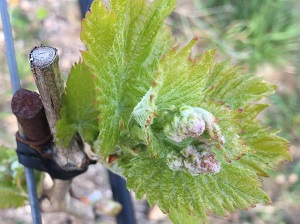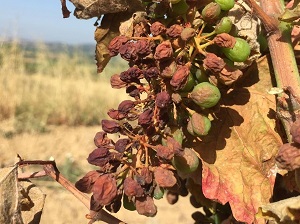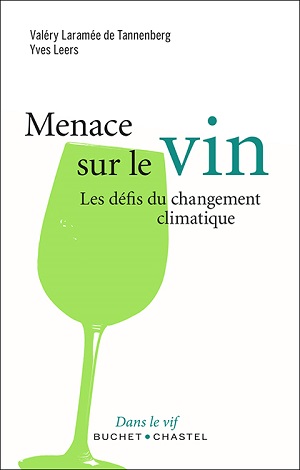The heat has brought the harvest earlier and earlier
A recent study by the European Geosciences Union successfully demonstrated a correlation between the rise in average temperatures and the earlier harvests. They did so by using the recorded data collected from the Burgundy wine region since 1354. The study calculated that between 1354 and 1988, the average start date for the harvest was around the 28th September. Since 1988, the year when the inflexion of the temperature curve took place and the temperatures started to increase by more than the average, the average start date for the harvest is now 13 days earlier, on the 15th September.
It’s not just the hot summer temperatures and heatwaves which cause the grapes to ripen faster (sometimes the heat can have the opposite effect and block the maturity), it’s the average temperature throughout the year that is making each stage of the vine’s development earlier. The bud burst, flowering, and veraison are all happening earlier, as a study by INRA France Agrimer showed in 2017 (donwload the chart – in French).

The harvest being earlier makes the organisation of the teams and the harvest more difficult for the winemakers, but it’s not the only consequence, nor the most worrying.
The impact of the heat on the harvest
As we just mentioned, the winemakers must reorganise the way they work in the face of climate change, not just for the harvest, but in the methods and techniques used in the vineyard throughout the year. All of the green work is challenged. For example, when the summer is forecast to be hot, the winemakers remove much less leaves than before, so as to not burn the grapes by leaving more shade. The tops of the vines are trimmed more severely to reduce the surface area of foliage, thus limiting the photosynthesis that causes the grapes to ripen too quickly.
And even before this stage, some winemakers opt to spread mulch in the vineyard as opposed to mowing the grass.This creates a vegetative layer that limits the evaporation of water when it is hot. Research is also under way in some regions to evaluate the planting of grape varietals that mature later and are less sensitive to the heat.
We can also note that other climatic conditions are also impacting the vines. When the winters are warmer, the bud burst happens earlier, and so any late frosts are more likely to cause significant damage to the buds. Hail falling from thunderstorms, and droughts are becoming more frequent and intense, increasing the risk of reducing the yield. And then there are new diseases and parasites that are appearing with the warming, as well as shortening the reproductive cycles and the number of generations of insects each year. The eudemis grape berry moth and leaf hoppers are good examples.

Even without all of the above, a summer drought can drastically reduce the yield because, without water, the grapes don’t swell enough and produce less juice to ferment.
The quality of the wine evolves and the characteristics change. With heat, the level of sugar in the grape must increases, and can give wines with a higher alcoholic degree and less acidity. For red wines, sometimes it is a characteristic that is sought after, allowing the wine to have stewed fruit aromas rather that fresh fruit. But it is generally much less desirable for white wines because you need a certain freshness and equilibrium with the acidity.
A few avenues to explore in the face of rising temperatures
In terms of the work in the vineyard, we have already touched on some of the techniques that can be used to fight against the heat and lack of water. As well as research into new types of grape varietal, studies are underway to produce rootstocks that are more resistant to drought.
On the winemaking side, you can also compensate for the lack of acidity by choosing yeast that is able to produce less alcohol from the same amount of sugar, or by using tartaric acid, although these methods are of course less naturel. You can also remove some of the alcohol by filtering it through a membrane, but this can also alter the taste of the wine. Filtering is also possible before the fermentation to remove some of the sugar in the juice.
These procedures are just avenues to explore for the moment, and are not completely satisfactory in that they act in response to the initial problem, that of rising temperatures and global warming. But they are worth exploring given the acceleration of the rise in temperature over the past few years, as the winemakers are likely to face bigger and bigger threats to their harvest over the coming years.





